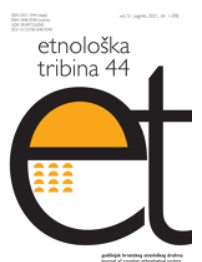Sacred Water Pools of Hindu Sacredscapes in North India
Sacred Water Pools of Hindu Sacredscapes in North India
Author(s): Rana P.B. Singh, Pravin S. Rana, Sarvesh KumarSubject(s): Cultural history, Regional Geography, Environmental Geography, Ancient World, Indian Philosophy, Environmental interactions, Tourism, History of Religion
Published by: Hrvatsko etnološko društvo
Keywords: Ayodhya; holy-heritage city; Lolark Kund; pilgrimage tourism; Suraj Kund; Varanasi;
Summary/Abstract: The basic metaphysical frame of life in ancient India, that of sacred water (paviṭra jala) and the notion that “Water itself is life” (jala hī jivan hai), can be illustrated with case studies of two cities. Settled continuously since 1000 BCE, the cities of Varanasi and Ayodhya have been eulogized as the salvific holy-heritage cities in India known for their ritualscapes associated with sacred waters and pools. According to the ancient treatises and tales, there were fifty-four sacred tanks (kunds) and wells (kūpas) in each of these cities, and they became important sites for purification rituals, pilgrimage, healing and festive celebration by devout Hindus. After providing descriptions of the sacred water pools, this essay in part explores traditions associated with a water-pool sacred to the Sun god in both the cities. More broadly, using ancient texts, present participatory surveys, and ethnological narration, the essay considers the long-lived sacrality of water pools in these holy cities and current development strategies involving them.
Journal: Etnološka tribina : Godišnjak Hrvatskog etnološkog društva
- Issue Year: 51/2021
- Issue No: 44
- Page Range: 12-33
- Page Count: 22
- Language: English

